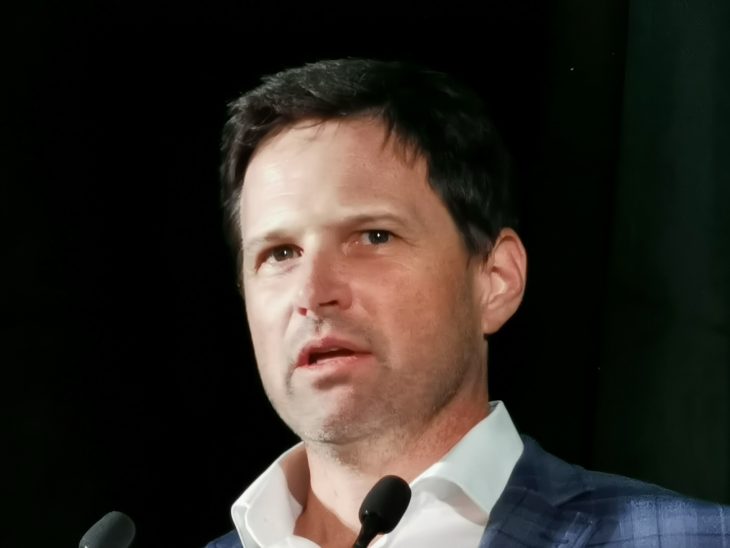
ISPs receiving funding through the program will be “off to the races” soon, says Infrastructure Ontario’s director of commercial projects
By Lynn Greiner
GEORGINA, Ont. – As many as 1.4 million Ontarians in 700,000 households and businesses lack access to high-speed Internet, with some lacking access to even the most basic Internet service.
Given the growing need for connectivity, accelerated by the pandemic, the Ontario government has committed nearly $4 billion to programs to address this issue and allow citizens to participate fully in today’s workplace, educational institutions, telemedicine opportunities, and online commerce.
One such program is the Accelerated High-Speed Internet Program (AHSIP), which aims to reach up to 266,000 of the hardest to reach, unserved and underserved homes and businesses across the province by the end of 2025.
At last week’s Canadian Rural and Remote Broadband Community Central Canada conference, presenter Luke Barker (above), director of commercial projects at Infrastructure Ontario, ran through the process and progress of the initiative, planning for which began in 2020 with a technical working group, feasibility studies, and market soundings to determine where the need was greatest.
“As you can imagine, as all of you know, Internet is an essential service now,” Barker noted. “I would argue with my former Hydro One counterparts that we are just as important now as they have been over the years. They drove the bus for a long time, and I think ISPs are in the driver’s seat now or at least maybe sitting beside them in the cockpit.”
Although various levels of government have been working on the problem for several years, there are still a lot of gaps, so AHSIP was developed through what Barker called “a series of very cool ideas” from a group that included everyone from governments and contractors to vendors and Internet service providers (ISPs) that looked at barriers to deployment and came up with imaginative solutions.
One of those ideas was to divide up the underserved areas of the province into blocks known as lots, and hold a reverse auction among all ISPs. Each lot had a reserve price on it – the maximum the government would pay for service in that lot – and when the bidding dust settled, eight ISP won lots. Another legislative solution involved the Building Broadband Faster Act and its associated guidelines, and yet another persuaded utility companies to allow for the use of their poles for Internet infrastructure.
“They started with this utility-enabled Brighton pilot,” he explained. “In a lot of places where we live, [utility infrastructure] is mostly above ground, for obvious reasons. So, they thought, let’s see if we can do this utility-enabled model where we leverage that existing infrastructure owned by, in this case, Hydro One, and the LDC (local distribution company) and have them string fibre. They got Hydro One to build some backhaul. And then they’ll partner with smaller ISPs to provide the end user service.”
In Brighton, this could provide high-speed Internet access to as many as 1,450 homes and businesses.
Managing the AHSIP process is the broadband coordinator (BC), a team from Infrastructure Ontario that provides oversight, direction and coordination of the program activities, with the help of the technical assistance team (TAT), which provides technical and administrative support to stakeholders that may have limited resources. The Broadband One Window (BOW) is the digital platform that ties it all together.
“The technical assistance team is very important,” Barker added. “What they’ll do is interact and interface with all of the stakeholders for a variety of reasons. So, let’s say that Bell Canada sends a permit to Hydro One that has a material deficiency. They didn’t provide some piece of information that is essential for Hydro One to process that permit. That comes to my team, we take a look and interface with Hydro One and Bell to sort that material deficiency out,” he said.
“We also are accountable for early and informal dispute resolution. So, when two parties start to bicker, we will step in and try to smooth the waters.”
The project is now in the design phase, which Barker hopes will be complete in a month or so. And then, he said, “All these ISPs will be off to the races and building broadband.”
Photo taken by Lynn Greiner at CRRBC’s Central Canada conference.



